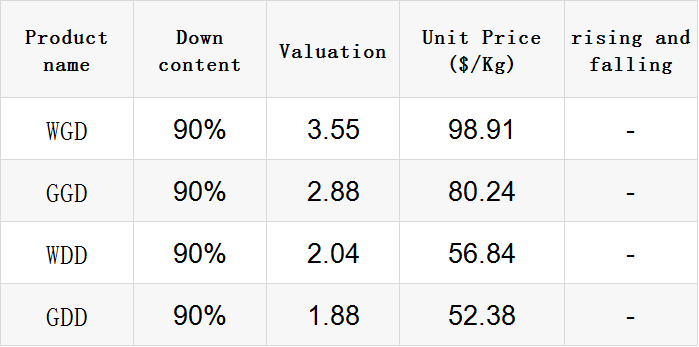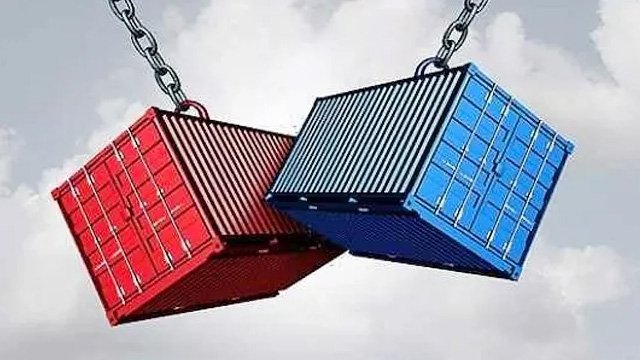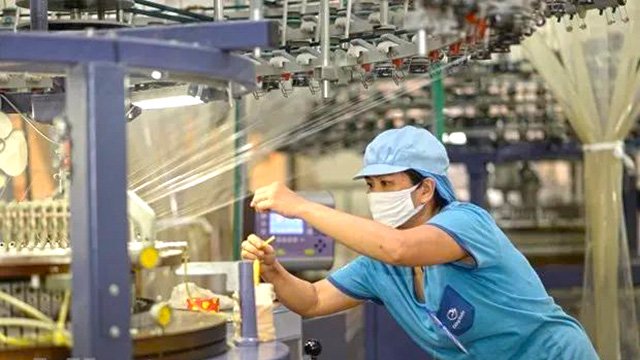Cn-down > Domestic news > News content
2021-10-11 来源:羽绒金网 浏览量:2012
summary
During the National Day holiday, market conditions were relatively stable.The current actual transaction situation has not changed much, and we need to continue to wait for the arrival of the autumn and winter replenishment market.
Just as industry professionals were worried about the poor prospects of the industry because the heat in the south was hard to retreat, three consecutive waves of cold air came unexpectedly. Next, most parts of the country may experience low temperatures.
As for the much-anticipated La Niña, due to the weakening of the influence of Antarctic sea ice, it is now entering the rising range of the El Niño index.Climatologists will continue to closely monitor the development of the tropical Pacific in the next two weeks.
On the other hand, the main export destinations of my country's down and feathers are Southeast Asian countries. After a long struggle with the virus, they have not only failed to reduce the number of confirmed cases, but have increased unemployment. However, due to economic pressure, governments of various countries had to choose to make changes, or even risk unblocking them. It's just that in addition to facing a labor shortage, they have to beware of shortages in the textile supply chain from China.
Exchange rate of USD to RMB: 6.4604

good news
On October 4, local time, US Trade Representative Dai Qi said that the US plans to have a frank dialogue with China on the implementation of the first phase of the China-US economic and trade agreement, industrial policies and other issues.She stated that the US has no intention to "intensify" trade tensions with China.
Dai Qi also stated that the United States will initiate a targeted tariff exemption procedure, allowing U.S. companies to apply for exemptions from additional tariffs on certain Chinese goods exported to the United States. She also put forward the concept of "long-term coexistence" between the United States and China, seeking to open up a new path to change the pattern of bilateral trade between the United States and China.

Some American business groups are disappointed that Dai Qi did not explicitly mention the removal of additional tariffs on China.Gary Shapiro, chairman of the American Consumer Technology Association, issued a statement on the same day that the Biden administration should end these tariffs that hurt American companies and consumers.
Doug Barry, spokesman for the US-China Business Council, said: "Our concern is that these tariffs will exist forever and will have a negative impact on the U.S. economy. The committee speaks on behalf of 200 companies doing business in China."
On October 5, the Office of the United States Trade Representative stated that it was seeking public opinions on plans to resume targeted tariff exclusion procedures for Chinese imports, in particular "whether to restore the previously expanded tariff exclusions for 549 imported product categories."
The Office of the United States Trade Representative said it will listen to public opinions from October 12 to December 1 to determine whether to exclude a range of products including industrial parts, thermostats, medical supplies, bicycles and textiles.

Of the more than 2,200 approved exclusions, 549 were extended. Most of these exclusions expire on December 31, 2020. Since it was discovered that these exclusions require additional time, the Office of the United States Trade Representative will assess the possible restoration of each exclusion on a case-by-case basis.
The focus of the assessment will be whether this particular product is still only supplied from China despite the additional tariffs imposed for the first time in September 2018.
Recently, Ho Chi Minh City, the largest city in Vietnam, announced the unblocking of the epidemic prevention measures for nearly three months from October 1. Prior to this, Ho Chi Minh City implemented a strict “foot ban” for epidemic prevention, and many factories and enterprises fell into a “stop work tide”. The garment and textile factories of foreign enterprises in Vietnam were the most affected. After Vietnam is gradually unblocked, the local textile and garment industry may become active again.
According to Taiwan media reports, Guangyue, a major down garment manufacturer, pointed out that after Vietnam's unblocking and full resumption of work, with full orders, plus the strong shipments from mainland factories and Jordan factories, it was originally the fourth quarter of the traditional off-season, but it will be the peak season.

Luo Renjie, a spokesman for Taiwanese clothing manufacturer Ruhong, said on October 1 that it is estimated that the resumption rate of Vietnamese factories in October has a chance to challenge 50%.Lin Hengyu, a spokesperson for Juyang in the same industry, also said that the company's Vietnam factory has resumed more than half of its work in September, and about 1,000 people have entered the factory.
Vietnam's anti-epidemic actions are a microcosm of Southeast Asian countries. Under the huge economic pressure, countries outside Vietnam, the Philippines, Malaysia and other countries are gradually relaxing restrictions to revitalize the economy.
The continuous rainy season during the National Day holiday has brought the temperature to the trough in the north. With the relay of cold air, the temperature in various places will generally remain at a low level, and the lowest temperature in many places will hit a new low in the next six months. The 0℃ line will gradually advance to Shanxi. North, northern Shaanxi, and central Gansu.
In large cities, the lowest temperature in Urumqi will drop to -6°C in the morning, and coldness is rare in early October.
Regardless of whether this winter is cold or not, supercomputers have predicted that from October 13th to 20th, the temperature in many parts of my country's central and eastern regions may turn to a low state. This means that in the later period, the southward movement of cold air may make the south too cold.

The mid-term forecast of the Central Meteorological Observatory also pointed out that from 13 to 15 days, there will be moderate cold air affecting our country.In the next 11-20 days, the temperature in Jianghuai and most areas north of it will be 1-3°C lower than normal. Among them, the temperature in parts of eastern Inner Mongolia, northeast and other places will be as low as 5°C.
On 16-17, another strong cold air will affect the central and eastern regions of my country from north to south.
 热门排行
中国三大羽绒生产基地之—广东吴川
全球最奢侈羽绒服排行
一件羽绒服需要多少只鸭子的羽绒?
2017羽绒原料价格一路上涨,究竟为何?
飞丝是什么?能代替羽绒?别被骗了,三种方法让你告别假羽绒服!
你的羽绒服为什么钻绒?涨知识了
羽绒被的价格一般是多少 通过成本看羽绒被价格
中国羽绒服四大品牌调查:到底谁才是最强王者?
羽绒金网:羽毛、羽绒、毛绒计价
《羽绒羽毛》、《羽绒羽毛检验方法》新版标准发布,2017年7月1日实施
热门排行
中国三大羽绒生产基地之—广东吴川
全球最奢侈羽绒服排行
一件羽绒服需要多少只鸭子的羽绒?
2017羽绒原料价格一路上涨,究竟为何?
飞丝是什么?能代替羽绒?别被骗了,三种方法让你告别假羽绒服!
你的羽绒服为什么钻绒?涨知识了
羽绒被的价格一般是多少 通过成本看羽绒被价格
中国羽绒服四大品牌调查:到底谁才是最强王者?
羽绒金网:羽毛、羽绒、毛绒计价
《羽绒羽毛》、《羽绒羽毛检验方法》新版标准发布,2017年7月1日实施
 推荐阅读
“吴川力量”助中国羽绒接轨世界
中国三大羽绒生产基地之—广东吴川
中羽协第二期新国标培训班 在“羽绒之乡”广东吴川成功举办
羽绒之乡:贵港桥圩镇将打造旅游休闲特色小镇
广西贵港桥圩镇:打造中国羽绒休闲旅游特色小镇
羽绒金网:羽毛、羽绒、毛绒计价
羽绒别急着收 中央气象台发布寒潮蓝色预警 部分地区降温超12℃
上海消保委检测 千元鹅绒被用鸭毛绒填充
冻哭丨降温10℃!鸡年首个寒潮预警来袭,你准备好了吗?
传统羽绒产业如何实现转型升级?四川玉泉镇产业集群发展
推荐阅读
“吴川力量”助中国羽绒接轨世界
中国三大羽绒生产基地之—广东吴川
中羽协第二期新国标培训班 在“羽绒之乡”广东吴川成功举办
羽绒之乡:贵港桥圩镇将打造旅游休闲特色小镇
广西贵港桥圩镇:打造中国羽绒休闲旅游特色小镇
羽绒金网:羽毛、羽绒、毛绒计价
羽绒别急着收 中央气象台发布寒潮蓝色预警 部分地区降温超12℃
上海消保委检测 千元鹅绒被用鸭毛绒填充
冻哭丨降温10℃!鸡年首个寒潮预警来袭,你准备好了吗?
传统羽绒产业如何实现转型升级?四川玉泉镇产业集群发展